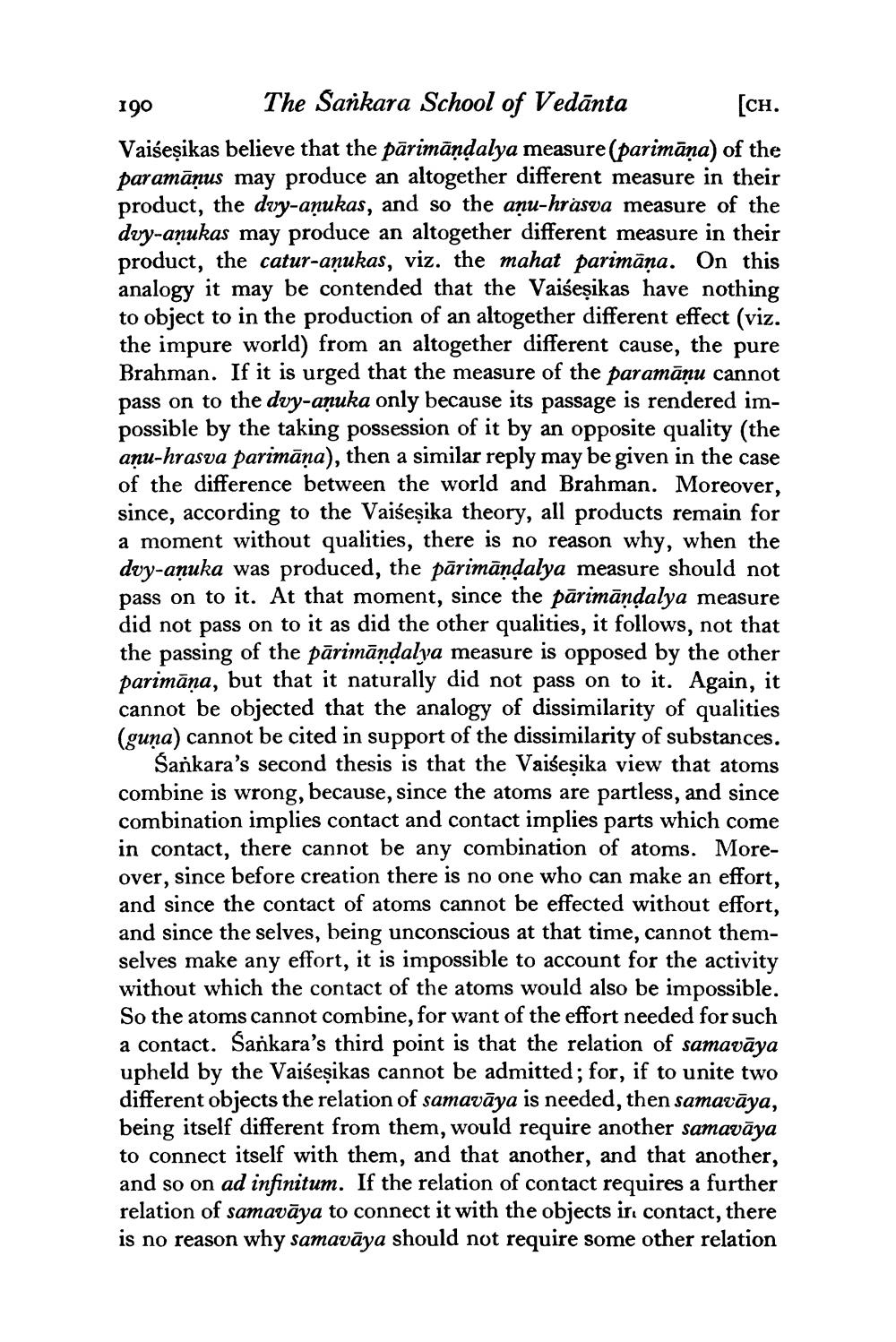________________
The Sankara School of Vedanta
[CH.
Vaiśesikas believe that the pārimāṇḍalya measure (parimāṇa) of the paramāņus may produce an altogether different measure in their product, the day-anukas, and so the aṇu-hrasva measure of the dvy-anukas may produce an altogether different measure in their product, the catur-anukas, viz. the mahat parimāna. On this analogy it may be contended that the Vaiseṣikas have nothing to object to in the production of an altogether different effect (viz. the impure world) from an altogether different cause, the pure Brahman. If it is urged that the measure of the paramānu cannot pass on to the day-anuka only because its passage is rendered impossible by the taking possession of it by an opposite quality (the aņu-hrasva parimāṇa), then a similar reply may be given in the case of the difference between the world and Brahman. Moreover, since, according to the Vaiseṣika theory, all products remain for a moment without qualities, there is no reason why, when the dvy-anuka was produced, the pārimāṇḍalya measure should not pass on to it. At that moment, since the pārimāṇḍalya measure did not pass on to it as did the other qualities, it follows, not that the passing of the parimandalya measure is opposed by the other parimāṇa, but that it naturally did not pass on to it. Again, it cannot be objected that the analogy of dissimilarity of qualities (guna) cannot be cited in support of the dissimilarity of substances.
Sankara's second thesis is that the Vaiseṣika view that atoms combine is wrong, because, since the atoms are partless, and since combination implies contact and contact implies parts which come in contact, there cannot be any combination of atoms. Moreover, since before creation there is no one who can make an effort, and since the contact of atoms cannot be effected without effort, and since the selves, being unconscious at that time, cannot themselves make any effort, it is impossible to account for the activity without which the contact of the atoms would also be impossible. So the atoms cannot combine, for want of the effort needed for such a contact. Sankara's third point is that the relation of samavāya upheld by the Vaiseṣikas cannot be admitted; for, if to unite two different objects the relation of samavāya is needed, then samavāya, being itself different from them, would require another samavāya to connect itself with them, and that another, and that another, and so on ad infinitum. If the relation of contact requires a further relation of samavāya to connect it with the objects in contact, there is no reason why samavāya should not require some other relation
190




